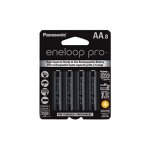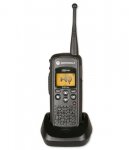Not sure where you are going with this thread. There are several very good Ni-MH batteries out there, work perfectly well, and do not kill the environment.
I do not see how having a Li-Po would make anything 1000 times easier, nor would it be cheaper as currently Whistler does not supply the batteries, nor would it last for weeks instead of hours as 2500mAh is 2500mAh is 2500mAh regardless of it being Li-PO vs.Ni-MH.
Get a 1 or 2 good quality sets of rechargeable AA Ni-MH and a good external charger. I get 12 hours of use from mine when fully charged. I have been told the Uniden units only work for 6 hours on a set of batteries but I do not have one to personally confirm. Maybe someone else can chime in on that.
Where do I start? Ok, our
current situation:
1. I have to purchase a $45+ battery charger AFTER purchasing a $500 scanner that supposedly comes with a charger. (it really doesn't for reality purposes).
2. I have to purchase a minimum of 2 sets of 4 pack AA rechargeable batteries. Another $30 a piece for a total of $60 more. And in my case, I needed 3 sets, that's $90+ shipping and taxes for 3 sets of good quality rechargeable AA 4 packs. Which means I'm at about $150 in addition to the $500 purchase price of the scanner. That's over 20% of the purchase price. Imagine having to spend 20% more to get a car running after you spend $20k on a car.
3. Now I have to have a battery charger and 2 extra sets of 4 AA batteries in the drawer, I have to plug it in, remember to unplug it, keep track of which batteries are charged, which are not, make sure I don't leave them in the charger in-attended for too long or forget they are plugged in...
4. I can't install or use the rubber protective covering on the scanner, because every 6 to 8 hours, I have to turn the scanner off, open it up, remove 4 AA's, re-insert 4 new AA's, put it back together and hope I put the AA's in the right direction (because I'm old and can't see without my reading glasses!). So the TWO nice rubber protective cases that I would LOVE to utilize to protect the unit from "bumps and bruises" or a complete smash when dropped (which WILL occur eventually!) are useless because you can't change the batteries with them on.
5. These AA's are only 2500mh MAX (most are much less, and likely even the ones that say 2500 are more like 2000), so the unit only works for 6 or 8 hours. You are aware it is 2017 right? 6 hours?? Really? Your ok with that? Most electronics today run for days, weeks or MONTHS on a charge.
6. Now I will be throwing away, in the trash because nobody deals with them correctly, 4, 8 or 12 Nimh CORROSIVE and VERY bad for the environment batteries that will wind up in the landfill leaking chemicals in our kids drinking water. They will have cancer, and nobody will understand why! Well, you now know why.
7. OR, many will NOT use rechargables, and actually buy sets of 48 AA's from Costco, Sams or BJ's, and throw 100's if not 1000's of these little cancer causers away each year. Not to mention the cost they will be wasting on these.
8. Should I keep going ?? I have about 10 more if you really want to hear them all?
.....
The rest of the world and we should join them:
1. Instead of 2500mh, the battery packs like the one pictured above is 4 times the size of 4 AA's. And as previously mentioned by somebody, battery packs generally get 20% to 50% more power in the same space as AA's because there is not wasted packaging space, they are much more dense. So we could have 6,000, or 10,000, or 15,000mh's of power. Can you say WEEKS, MONTHS of power?? I can!! My Icom VHF transceiver has one of these battery packs and lasts me a FULL YEAR! And it uses a hell of a lot more power broadcasting at 5 watts than the little scanner receiver only does. Nuff said!
2. I would not need to buy ANYTHING after spending my $500 to purchase the unit. If you wanted to, you could buy an extra battery pack, they are about $30. Changing them is snap one off, snap the other on. No opening anything, no figuring out what direction they go,.... AND, reality is, you don't need an extra pack, because of #3...:
3. You get a charger stand/dock. When your using your unit at your desk, you just drop the unit into the charger stand/dock and it is being powered by AC AND charging. Overnight, just drop the unit in the charger and every morning your unit will be at 100% charge and ready to go with a WEEK or MONTHS worth of juice! No need to change batteries, no need to remove the protective case, no need to open the unit up, no need to manage sets of batteries, no need to have a clumsy expensive battery charger laying around, no worries about leaving plugged in....
4. Li-On battery packs generally last for YEARS, 5 to 10 YEARS. Not 6 months to a year like the rechargeable AA's do if your lucky.
5. Nothing to throw away daily, weekly or every few months into the landfill. Good for your kids!
So in summary, a battery pack will power the unit 10's or 100's of times longer, cost less, be MUCH easier to deal with, just drop in the charger to charge, pick up to use it for a WEEK or month! As opposed to the absolutely nightmare I have to deal with now with AA batteries which as I already mentioned, should be legislated right out of existence! They should be illegal to use, they are an absolute disaster.
I've been saying make li ion pack for a couple years and every time I mention it on a thread, I get shot down real quickly. They always bring up 20 years ago when they had nicad junk packs and they were no good. They are blinded I guess, because lipo and li ion is the future!
As have I. The current situation is actually embarrassing. Uniden and Whistler engineers/designers should be embarrassed by this.
Weeks instead of hours?
Really?
That's what you think?
Can you really be serious?
Yes, weeks instead of hours for daily users. And for "weekly" users like myself, MONTHS instead of hours and weeks. The battery packs are MUCH larger and hold much more power that the absurd AA battery packs which waste about 50% of the space they utilize in packaging.
2500mAH at 3.7V is a fair bit more than 2500mAH at 1.2V plus you probably could get a Li-Po cell with more than 2500mAH in the size of an AA but you're right you won't get weeks instead of hours.
Yes, WEEKS instead of hours, and MONTHS instead of hours and weeks. That is fact. A good example is my icom VHF (model M1) is now about 18 years old. It has a Li-On battery pack. I'm now on my SECOND battery pack. The original that came with the unit finally went (wasn't holding a charge anymore) 2 years ago. So I bought a new one for $29.99. I use the unit 8 months out of the year, about once or twice a week for a couple hours each. I charge the unit once a YEAR!! Yes, once a YEAR!! For me, this would be the exact same scenario for my Whistler Scanner. I use it once or twice a week for a few hours most of the time. But instead of charging it YEARLY, I have to actually open it up, and change the batteries just about every time I use it, which is weekly! That is ridiculous, especially given the M1 uses a lot more power than the TRX1. It's a transmitter, not just a receiver.
Wouldn't something like this be nice!! Youza!



